1. Pernell Roberts Hated the Show and Wanted Out
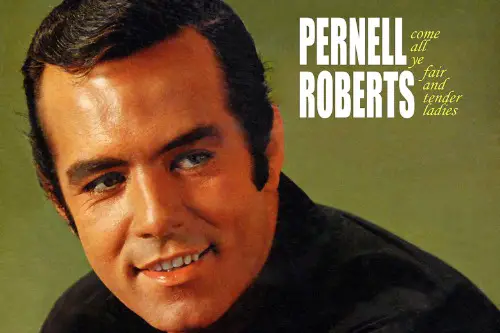
Pernell Roberts, who played Adam Cartwright, couldn’t stand Bonanza and made no secret of it, MeTV reports. He often criticized the show’s predictable scripts, lack of realism, and the fact that the Cartwright brothers were all grown men still living at home. Roberts was also frustrated with how the series avoided serious social issues, believing it was wasting its potential. Unlike his co-stars, he didn’t enjoy being typecast and longed for more meaningful roles in theater and film.
By 1965, his frustrations reached a breaking point, and he left after just six seasons. The show never replaced Adam, simply pretending he no longer existed. While the producers hoped he might return, Roberts was relieved to be free and never looked back. Decades later, he softened his stance, but at the time, he was one of the most outspoken actors to ever walk away from a hit show.
2. Lorne Greene’s Nickname Was “The Voice of Doom”
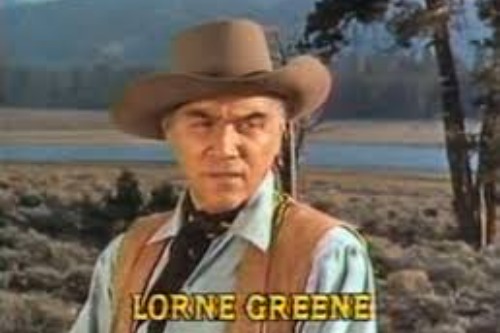
Before playing Ben Cartwright, Lorne Greene had a very different career—he was a news broadcaster. During World War II, he worked for the Canadian Broadcasting Corporation, delivering news updates with such a deep, serious voice that people started calling him “The Voice of Doom,” according to Queen’s University. His somber tone made every announcement sound ominous, even when the news wasn’t all bad. This reputation stuck with him long after he left radio for Hollywood.
It’s ironic because his Bonanza character was known for his warmth and wisdom. Instead of scaring people, he became America’s favorite TV dad, offering moral lessons and fatherly advice every week. Greene embraced his new persona, but his early broadcasting days gave him the commanding presence that made Ben Cartwright so believable. In a way, his “Voice of Doom” helped shape one of the most reassuring figures in television history.
3. Michael Landon Secretly Rewrote Scripts
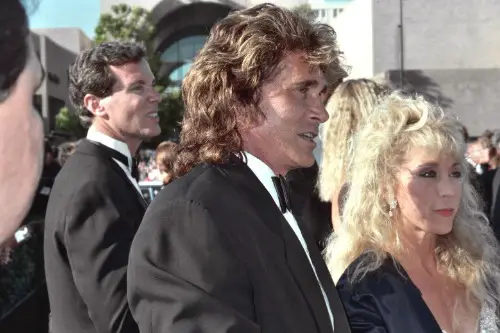
Michael Landon, who played Little Joe, wasn’t just a talented actor—he was also a perfectionist behind the scenes. Frustrated with weak dialogue and clichéd plots, he would often rewrite scripts. He started making changes early in the show’s run, and by the later seasons, he was writing and directing entire episodes. His influence was so strong that many of Bonanza’s best-loved moments were actually his creations.
Producers weren’t always thrilled with his interference, but they couldn’t deny his talent. Landon’s ability to shape the show eventually helped him launch his career as a writer and director. His work on Bonanza set the stage for his later success with Little House on the Prairie and Highway to Heaven. In many ways, Bonanza became his personal training ground for the legendary TV career that followed.
4. The Show Was Originally a Flop
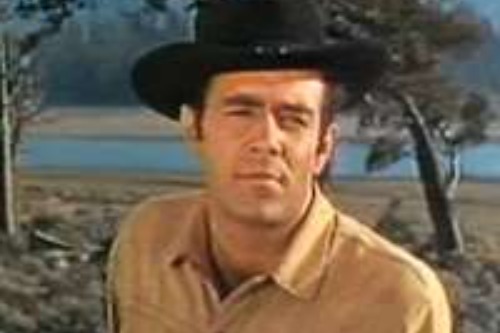
It’s hard to believe now, but Bonanza was almost canceled after its first season, according to The Saturday Evening Post. When it debuted in 1959, the ratings were underwhelming, and executives weren’t sure if audiences would stick around. The show was also one of the first TV series filmed in color, which was a huge gamble at the time. Many homes still had black-and-white televisions, making the color production an unnecessary expense.
What saved Bonanza was its sponsorship by RCA, the parent company of NBC. RCA wanted to sell more color TVs, so it pushed the network to keep Bonanza on the air to showcase its technology. By the second season, the show gained a loyal audience and became a massive hit. If not for RCA’s financial interests, Bonanza might have been forgotten as a failed experiment.
5. The Cartwrights Were Color-Coordinated on Purpose
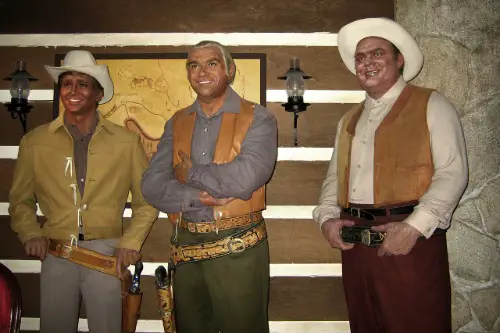
Ever notice how Ben, Adam, Hoss, and Little Joe wore the same outfits almost every episode? That wasn’t just laziness from the costume department—it was a deliberate choice to save time and money. By keeping their outfits consistent, the studio could reuse stock footage and avoid expensive re-shoots. It also made merchandising easier, as toy makers didn’t have to design multiple outfits for action figures.
This decision helped with continuity, ensuring that outdoor scenes shot months apart would still match. But it also gave the Cartwrights an almost cartoon-like appearance, making them instantly recognizable. While it was practical, it also led to some strange fashion choices—like Adam’s all-black outfit, which made him look more like a villain than a hero. Fans may not have realized it, but this simple trick helped keep Bonanza on budget for 14 seasons.
6. The Opening Theme Song Had Lyrics (And They Were Awful)
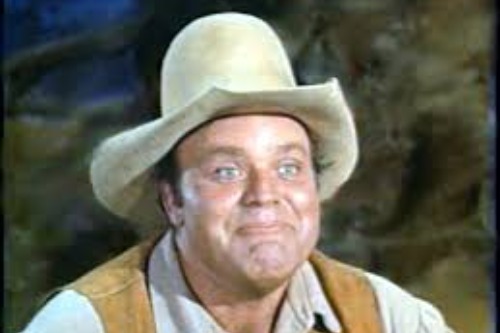
The Bonanza theme is one of the most recognizable tunes in TV history, but few people know it originally had lyrics. The lyrics, written by Jay Livingston and Ray Evans, were meant to be sung by the cast in the opening credits. The idea was quickly scrapped because, well, the lyrics were terrible. They awkwardly described the Cartwrights as “riding forever” and “carving out a frontier” in a way that felt forced.
A recorded version featuring Lorne Greene, Michael Landon, and Dan Blocker still exists, and it’s as strange as it sounds. The actors weren’t professional singers, and the lyrics didn’t match the epic feel of the music. Producers wisely decided to stick with the instrumental version, which became legendary on its own. If you ever hear the full version, you’ll understand why it was buried and forgotten.
7. Dan Blocker Was Once a Bouncer and a Teacher
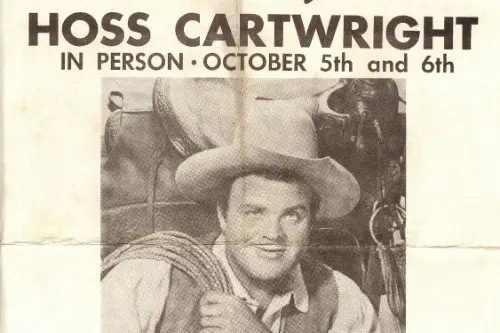
Before becoming the lovable Hoss Cartwright, Dan Blocker had an interesting and unexpected past. He was a high school English teacher and also worked as a bouncer in a bar. Standing at 6’4” and weighing over 300 pounds, he had the perfect build to keep unruly patrons in check. Despite his intimidating size, he was known for his kind and gentle personality.
His background as a teacher made him surprisingly patient on set, often mentoring younger actors. Blocker’s former students later recalled how surreal it was to see their old teacher as a TV star. His real-life personality closely resembled Hoss—tough on the outside but soft-hearted underneath. It’s hard to imagine anyone else playing the role with such warmth and authenticity.
8. The Ponderosa Ranch Became a Real Tourist Attraction
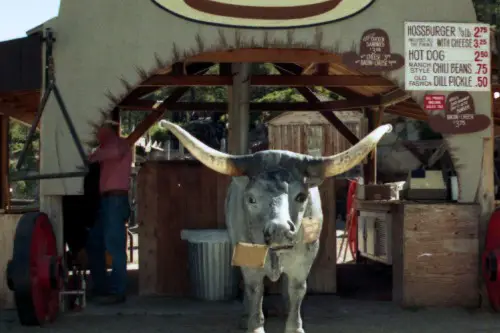
For years, Bonanza fans dreamed of visiting the Cartwrights’ ranch, and in 1967, that dream became reality. A businessman named Bill Anderson built a full-scale replica of the Ponderosa Ranch in Incline Village, Nevada, near Lake Tahoe. It wasn’t just a set—it was a full-fledged theme park, complete with a replica of the Cartwrights’ cabin, horseback rides, and Western-style entertainment. The attraction was so popular that even the Bonanza cast visited for publicity events.
For over 30 years, fans flocked to the Ponderosa to experience a piece of TV history. Michael Landon even filmed some later Bonanza TV movies there, making it an official part of the show’s legacy. Unfortunately, in 2004, the land was sold, and the new owner shut down the attraction. Today, nothing remains of the once-famous tourist site except fond memories and old photos.
9. The Show Had a Strange Obsession with Ben Cartwright’s Wives
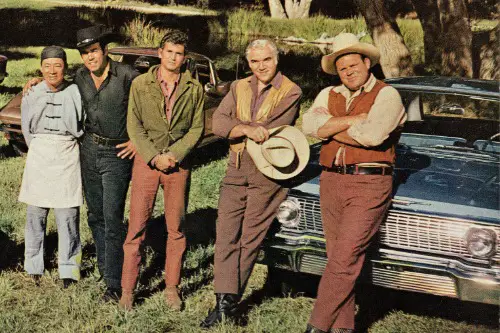
One of the weirdest running themes on Bonanza was Ben Cartwright’s tragic love life. He had been married three times, and each wife died before the series even began. That meant all three Cartwright boys had different mothers, which was unusual for a family-friendly show in the 1960s. Even stranger, Ben never seriously pursued another romance throughout the series.
Any time he did show interest in a woman, she was usually killed off or written out of the story. It became such a pattern that fans joked about the “Cartwright Curse.” Even the Cartwright sons weren’t safe—most of their love interests met tragic ends as well. The show’s writers seemed determined to keep the Cartwright men single, no matter how unrealistic it became.
10. The Cast Had a Prank War on Set
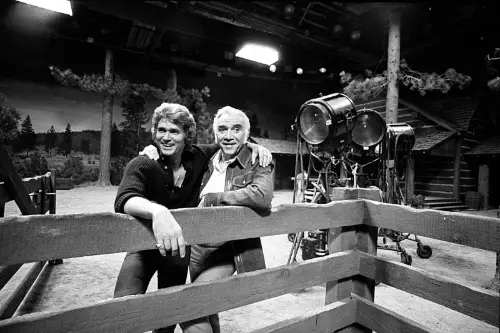
Despite the serious tone of the show, the cast of Bonanza had a reputation for playing practical jokes on each other. Michael Landon, in particular, was known for his mischievous sense of humor. One of his favorite pranks involved filling co-star Dan Blocker’s boots with lead weights so he would struggle to walk. Landon also liked to put live chickens in dressing rooms, leading to a few hilarious freak-outs.
Lorne Greene wasn’t immune to the fun, either—once, someone replaced his coffee with prune juice before a long filming session. The crew joined in too, occasionally rigging props to malfunction just to get a reaction from the actors. Despite the pranks, the cast remained close and considered each other family. These behind-the-scenes antics helped keep things lighthearted during long filming days.
11. The Show Inspired an Unusual Line of Merchandise
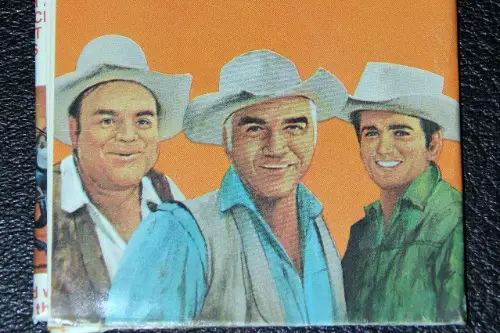
While most TV shows sell action figures and lunchboxes, Bonanza took things a step further. At the height of its popularity, the show licensed a bizarre array of products, including Ponderosa Ranch-branded pancake mix. There were also Bonanza cowboy hats, toy guns, board games, and even a Bonanza slot car racing set. One of the strangest items was a record called Ponderosa Party Time!, featuring the cast singing folk songs.
Lorne Greene, in particular, had an unexpected music career thanks to the show’s success. His spoken-word country song, “Ringo,” actually became a #1 hit in 1964. Fans couldn’t get enough of Bonanza-branded products, even if some of them had little to do with the show. It was one of the earliest examples of TV merchandising on a massive scale.
12. The Show Had a Specially Designed Horse for Hoss
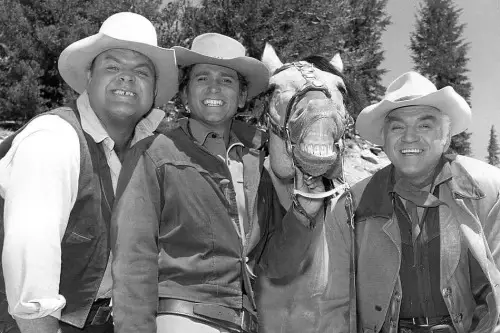
Dan Blocker was so large that finding the right horse for him to ride was a challenge. Most horses couldn’t comfortably carry his 300-pound frame, and the production team was worried about safety. Eventually, they found a massive horse named Chub, who was strong enough to handle Blocker’s weight. Chub became Hoss Cartwright’s signature horse and appeared in nearly every episode.
The bond between Blocker and Chub was so strong that the actor refused to ride any other horse. He even made sure Chub was well cared for, often visiting the animal off-set. Chub was part of the show for so long that fans considered him an honorary member of the Cartwright family. When Bonanza ended, the horse was retired and lived out his days in comfort.
13. The Writers Had No Idea How to Write Off Adam Cartwright
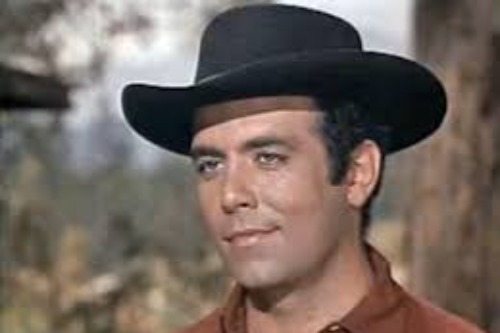
When Pernell Roberts left the show after season six, the producers struggled with how to explain Adam’s disappearance. Instead of killing him off or giving him a dramatic exit, they simply stopped mentioning him. Occasionally, a character would vaguely reference Adam being “away” or “traveling,” but there was never a real explanation. This led to some awkward moments where it felt like the Cartwrights had forgotten they had an older brother.
Fans speculated about Adam’s fate for years, with some joking that he had ridden off into the wilderness and never returned. Unlike other characters who got proper send-offs, Adam just faded from existence. This strange choice made Bonanza one of the only long-running shows to erase a main character without any real closure. Even today, fans still debate what actually happened to him.
14. The Show’s Final Season Was a Disaster
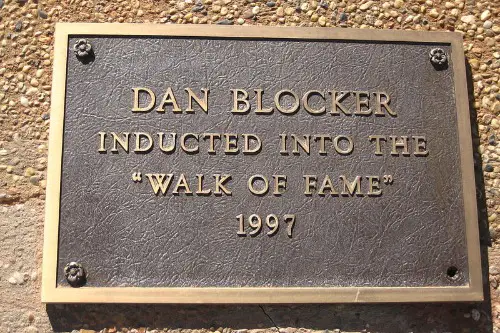
By the time Bonanza reached its 14th season, the show was running on fumes. Ratings had started to drop, and the network was considering ending the series. Then, tragedy struck when Dan Blocker unexpectedly passed away in 1972. His death left a massive hole in the show, and the writers struggled to continue without him.
Instead of replacing Hoss, they simply wrote his death into the show and moved on. But Bonanza wasn’t the same without Blocker, and the storylines became increasingly weak. Just a few episodes into the 14th season, NBC decided to cancel the show. It was a sad and abrupt ending for a series that had once dominated television.
15. Michael Landon Nearly Quit Because of a Haircut
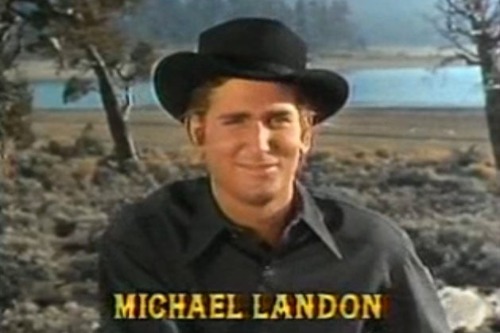
Michael Landon was very particular about his appearance on the show, especially his hair. When a director suggested he cut it shorter to look more rugged, Landon was furious. He reportedly threw a fit on set, refusing to film until his hair was restored to its original length. Producers quickly gave in, knowing they couldn’t afford to lose their biggest star over a haircut.
Landon’s insistence on controlling his look carried over into his later projects. On Little House on the Prairie, he had strict rules about how his character should dress and be styled. He believed that a consistent appearance helped keep fans invested in his characters. It’s safe to say that Michael Landon took his hair very, very seriously.
16. The Show Had a Surprising Connection to Star Trek
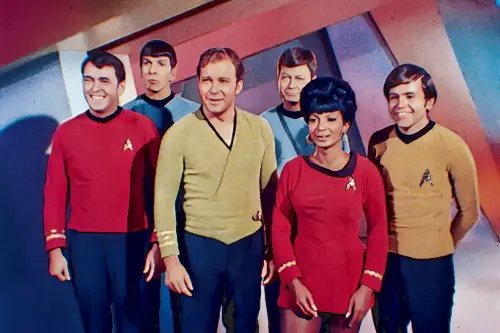
Believe it or not, Bonanza and Star Trek had more in common than you’d expect. Both shows were filmed at Paramount Studios and even shared some of the same sets. In fact, if you look closely, you’ll notice that some Bonanza buildings were reused as part of alien planets in Star Trek. The connection didn’t stop there—several Bonanza guest stars, including DeForest Kelley (Dr. McCoy), later became part of the Star Trek universe.
Lorne Greene himself almost had a closer Star Trek link. He was considered for a role in Star Trek: The Motion Picture but ultimately didn’t take part. Years later, he did get his own sci-fi legacy by starring as Commander Adama in Battlestar Galactica. It’s a fun bit of trivia that links one of TV’s greatest Westerns to one of its greatest space adventures.
17. The Cartwrights Never Ate Their Food On Camera

If you ever rewatch Bonanza, pay close attention to the dinner scenes—you’ll notice something strange. The Cartwrights often had huge meals in front of them, but they almost never took a bite. This wasn’t because of picky eating habits, but rather a trick to make filming easier. If the actors actually ate their meals, they’d have to take the same bites in every take for continuity, which was a nightmare for editors.
Instead, they just moved their food around their plates or lifted it to their mouths without eating. The only exception was Lorne Greene, who sometimes took small bites since he had fewer close-ups. Michael Landon, in particular, was known for avoiding on-camera eating because he didn’t want to mess up his dialogue. So while the Cartwrights had plenty of hearty Western meals, those plates mostly went untouched.
18. The Theme Song Was Once Used in a Car Chase
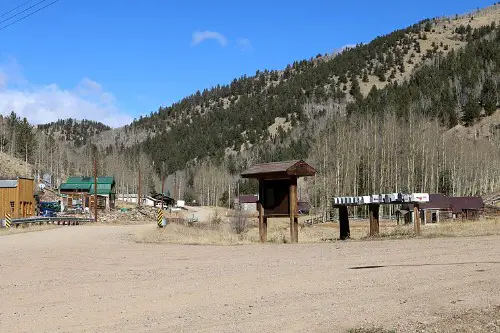
Of all the strange moments in Bonanza history, one of the most unexpected happened in real life. In 1988, a man in California stole a car and led police on a high-speed chase. As he sped down the highway, he turned up the radio, and blaring through the speakers was none other than the Bonanza theme song. The surreal scene was broadcast live on the news, with many viewers commenting on the absurdity of a Western tune playing during a police pursuit.
The suspect was eventually caught, but the clip became a minor pop culture moment. Some people even joked that the Bonanza theme gave the chase an oddly heroic feel. It just goes to show that even decades after the show ended, Bonanza still found its way into unexpected places. Few TV theme songs can claim to have soundtracked a real-life car chase!


